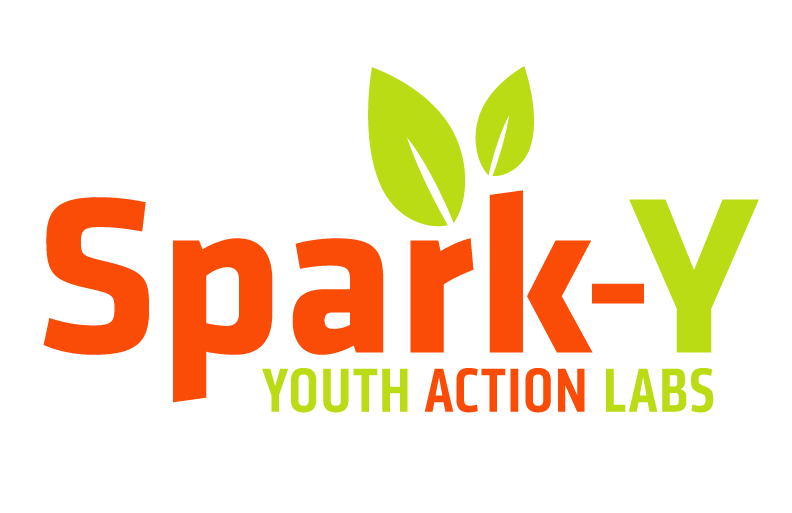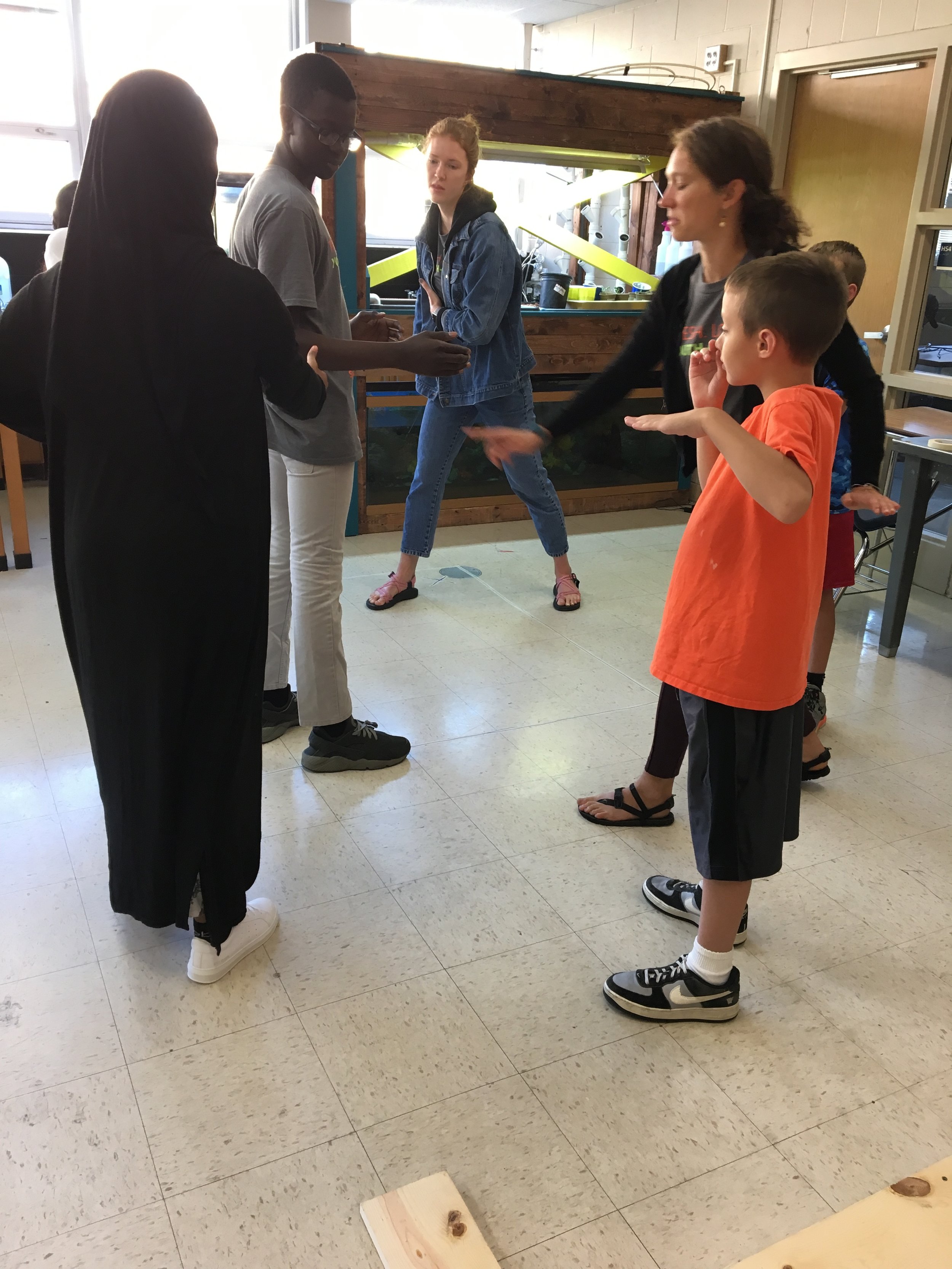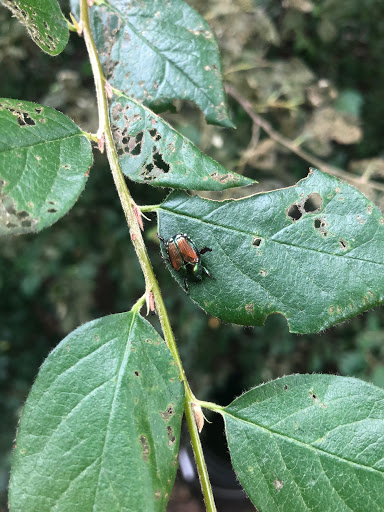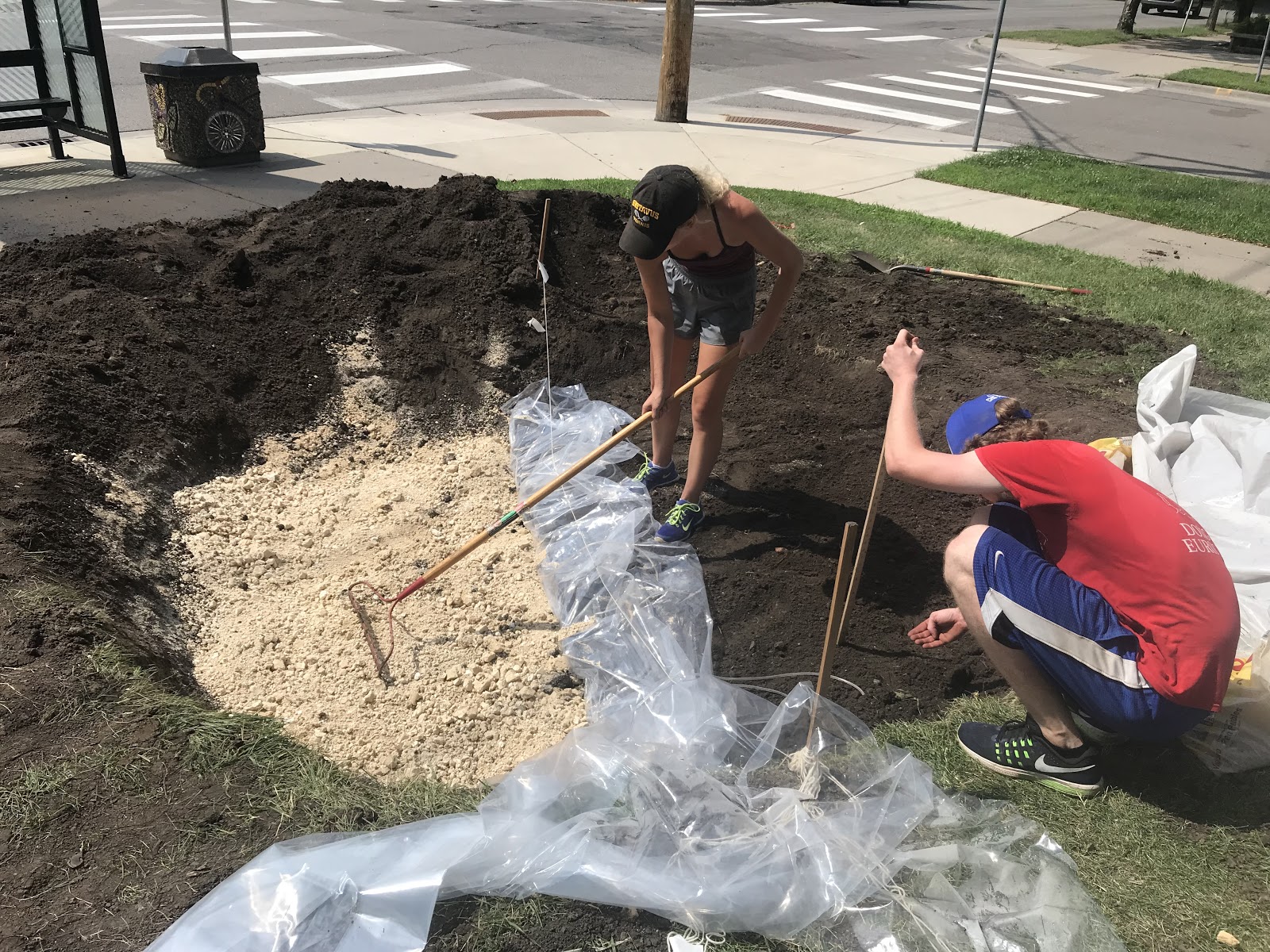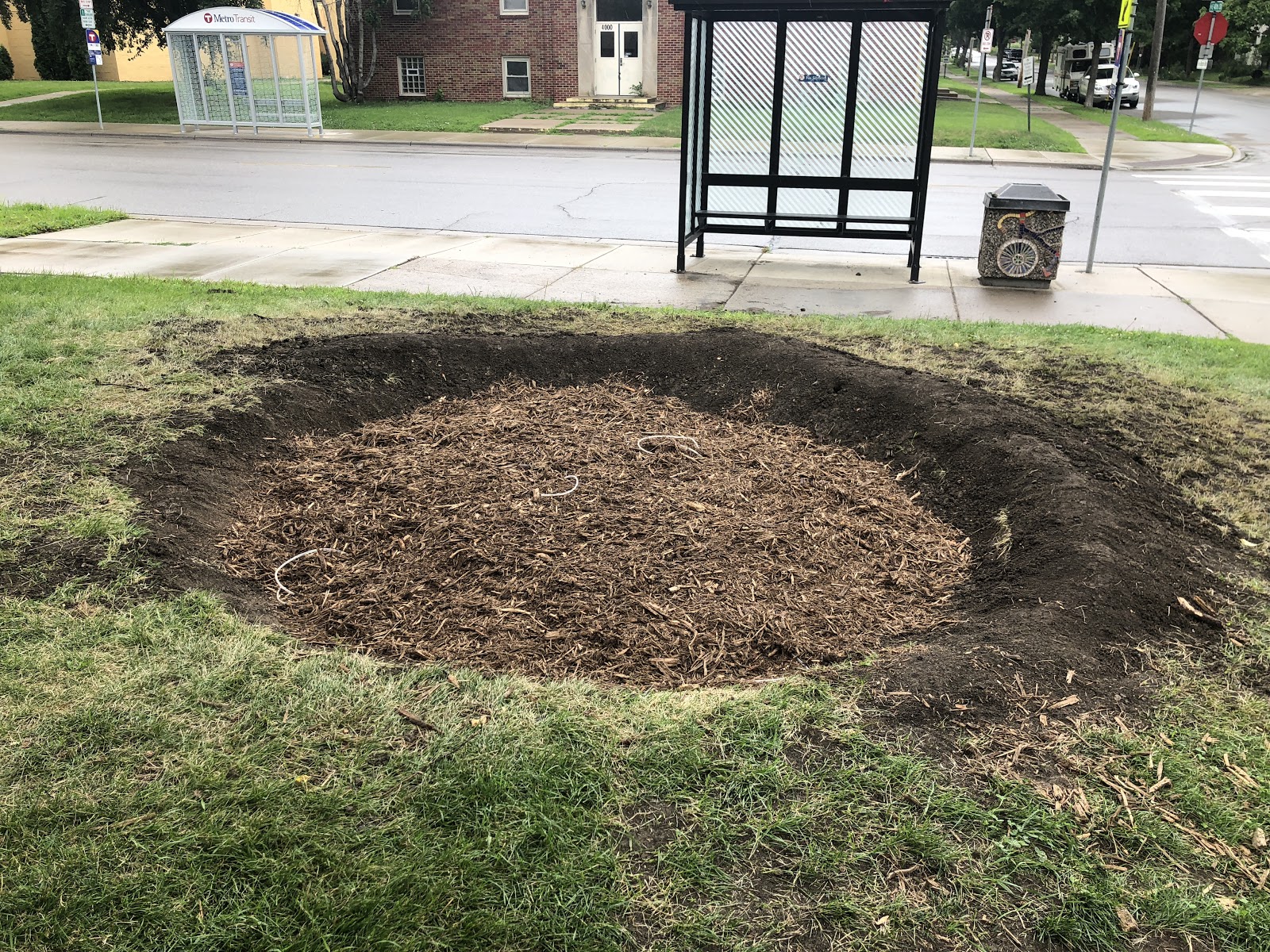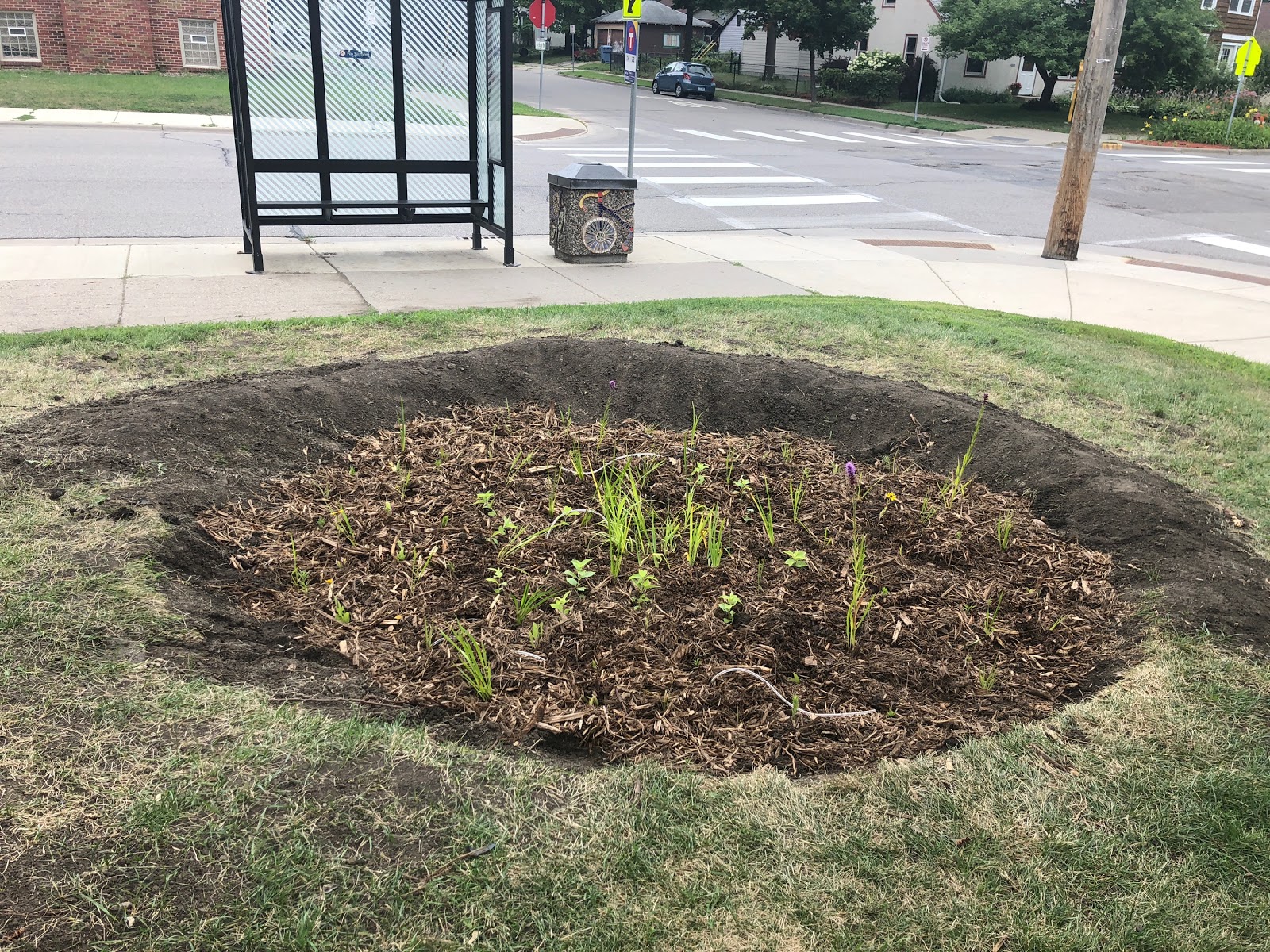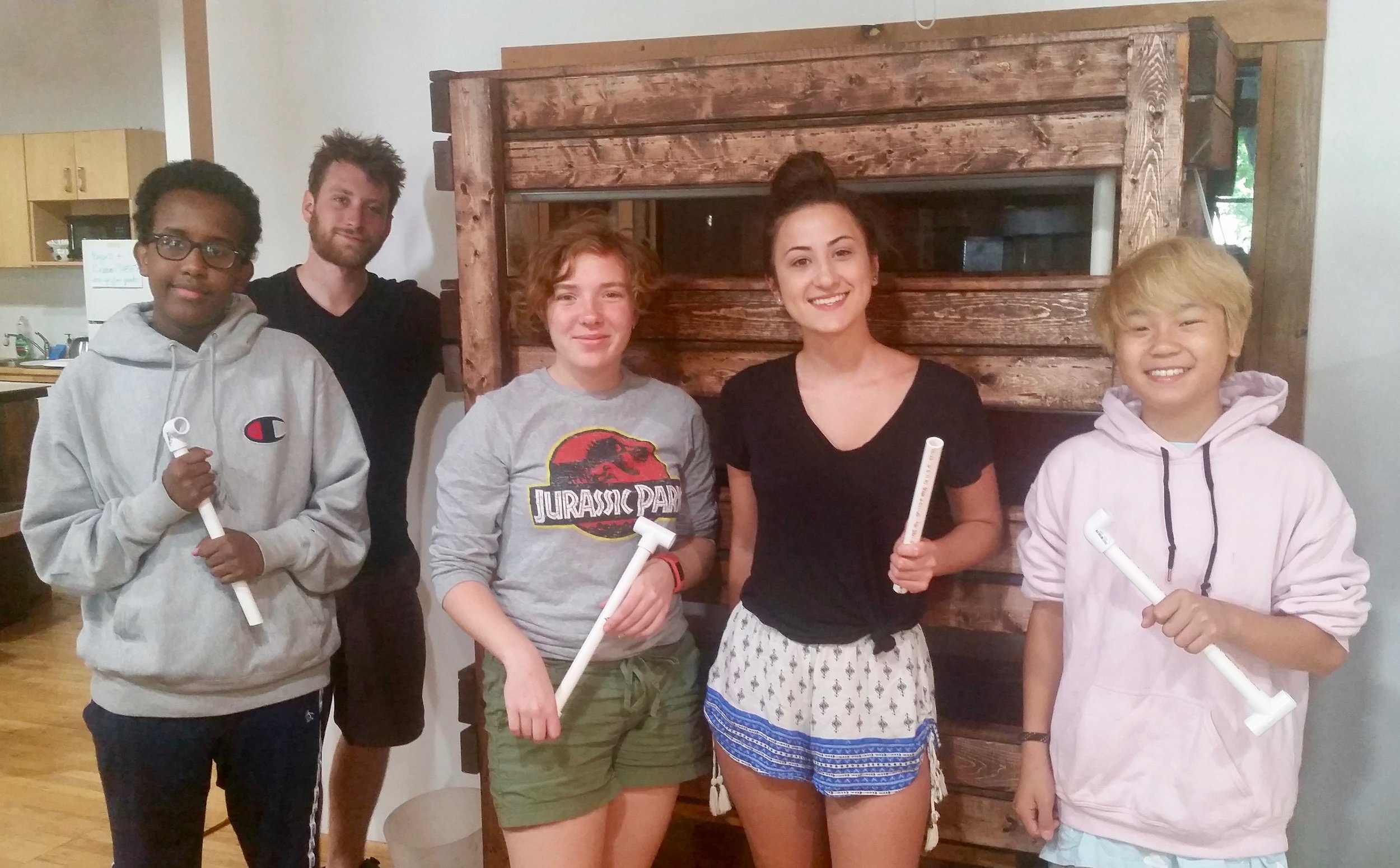The following blog post was written by the Columbia Heights Internship team: Shannon Van Dusartz, Mychayla Brown, Alejandra Diaz Torres, Modou Dibba, Salma Khalifs and Peyton Thao.
Our mission at Spark-Y is to empower youth with hands-on education, so the emphasis during our Columbia Heights Summer School project was to engage the students with hands-on learning. Our intern group consists of four Columbia Heights 10th graders, who are experts on all things aquaponics—they built the aquaponics system that currently resides in the high school. The last intern is a senior at the College of Saint Benedict, whose expertise is definitely not in aquaponics; however, our all-star team taught each other new things and tackled the challenge of planning a summer school curriculum head-on.
Our purpose was to plan eight days of content for a Spark-Y sponsored booster class for the Columbia Heights Encore Summer School Program. The first challenge was to think of ideas for the class as none of us had created curriculum before, and there was so much freedom to what we could plan. We thought about what Spark-Y has taught us during the development days and what Spark-Y teaches at other schools. We also wanted to utilize our diverse knowledge and experiences, and include those into our program. Finally, we decided on five themes with many activities in between: sustainability, aquaponics, gardening, fish, and nutrition. Selma and Alejandra took responsibility for the gardening, Modou and Peyton took charge during the fishing lessons, Shannon led the nutrition portion, and we all organized and led the aquaponics and sustainability lessons. To fill in the time, we did various activities like playing Ultimate Ninja or Mafia, and we even went outside into spectacular garden with Ms. Lemon.
One of our bigger projects during the program was to design and build a new shed door with help from Andrew, and the students were more than willing to build something with power tools. We had great help from our Spark-Y advisers Lynn, Krista, and Cece to teach the students about the Five Keys of Professional Development and the Five E’s of Sustainability.
Moving wood for the new shed door.
Andrew, Spark-Y Systems Excellence Specialist helping the team on their shed door build.
Hands-on Build
Our overall experiences share the same theme—we loved seeing the students learn and interact with new things. Here are some quotes from our intern group about our favorite parts of the experience and some challenging things as well.
Alejandra Diaz
“I think my favorite part of the camp was seeing the campers grow in knowledge. They started off with no idea of what aquaponics was, and in the end they became experts. I think they gained a lot from this program; not only did it spark new interests in them, but they learned about sustainability and were able to define and explain what it means and how important it is. One of the things that got complicated during the camp was that they were very active. I mean it was kind of predictable they are at the age were they have the most energy, and I found it hard getting them to refocus and settle down. Once we got their attention it was amazing how engaged they were. We asked them questions about aquaponics, fish, nitrogen cycle, plants and they were able to answer them from the knowledge they already had. One of my other favorite parts of the camp was to see the students care about our environment. They were very smart kids, and I enjoyed seeing them learn. At the end of the three weeks, not only did the students grow, but I believe our team grew as well. We started off knowing nothing about planning a curriculum and at the end we got the hang of it. We grew as team; not only were we coworkers, but we became closer to the point where I now consider them my friends. I loved this experience. If I have the chance to keep teaching younger kids about sustainability and our environment and how important it is, I would gladly do it again.”
Modou Dibba
“I had a basic idea of what was going on, or so I thought. Little did I know about time management. The first day of class was great, with basic introductory activities. But then it hit. The second day, jumping, screaming, slapping. It was just a game of Ultimate Ninja, but then it went out of control. Then Lynn calmly got all their attention and got them to sit down. After the second day, every day got better and better. Then one student just suddenly decides not to follow the rules, he received a warning and didn’t listen. Another student kept getting out of his seat in the last week, using skills I learned from from Lynn, Krista, Cece and my teammates, I was able to get him to calm down. Ever since I was a kid, science was the only field I wanted to pursue--now I see there are many other great options. I decided after this internship to keep my options open. The job fair held at Spark-Y on a development day helped me see ever more options. I still love science, but now I want to discover myself more.”
Selma Khalif
“My favorite experience during this joyride of a program was learning and getting to know each individual student. Our total of student was supposed to be 18 but was deducted to the ridiculous six we had at the end. Some of the students were the Human Google, who had all the answers to all science related question of his grade and above. Then there was the shy, kind-hearted young lady who when she talked...SHE TALKED--like in the most intriguing way, too. Then came one who was the oldest physically, but not mentally. The funniest goofball who made anyone around him seem like they knew him for years. Another was the “Canadian shipper” who envisioned the exportation of his greatest garden enemy “the Japanese beetle”. The sweet hilarious munchkin whose innocent, natural jokes made you laugh really hard and her fast learning abilities is astonishing. Last but never the least, one student was out of this world unique--he was so creative with his thinking and the way he interprets ideas. It gives you nostalgic feelings of your childhood. His greatest quote in the camp was “the liver is the garbage can of the organs”. Man, it gives you chills. I’ve gone through all my memories of these wonderful kids, and my time with them has sadly come to an end. But, I hope you enjoyed the description of them.”
Peyton Thao
“This was a fun experience for me and there are multiple moments during this time that were amazing. Out of all the things that happened, my favorite was dissecting fish and showing them majority of the fish organs. Our students also had to experience a horrific smell when I cut opened a sunfish (A.K.A. sunny fish). It was a mix of rotting fish, trash juice, and vomit. It was the best and worst thing that I did during the time. I would say one of the hardest parts is getting some kids to listen to the things that we were teaching them. The kids got really rowdy at times, but we handled it really well. I learned a lot these past weeks like how the pH scale works, how purple cabbage can make purple water, and a plant like mint grows in Minnesota. All in all, I liked this summer program and I would (or will) do it again.”
Shannon Van Dusartz
“These last few weeks have been the most beneficial and stressful time in my life. The only experience I have teaching children was when I was a theater camp counselor for third grade—that is much different than teaching summer school students about sustainability. But, through all the stress and complications, I learned so much about myself and my amazing teammates. My fellow interns taught me about how to be a better teacher and student, and they also taught me about aquaponics, which I knew nothing about prior to this program. While there were complications during the program, like the big aquaponics system breaking down, or having issues engaging the students and having them listen, the outcome of the camp was a teacher’s dream. On the last day, the student held their own open-house to the other summer school student about everything they learned; they knew so much more than we taught them and seeing them show off their knowledge was so gratifying. The last day was my favorite part, for sure. Overall, this program taught me so much, and I am so grateful for Spark-Y for providing this experience.”
